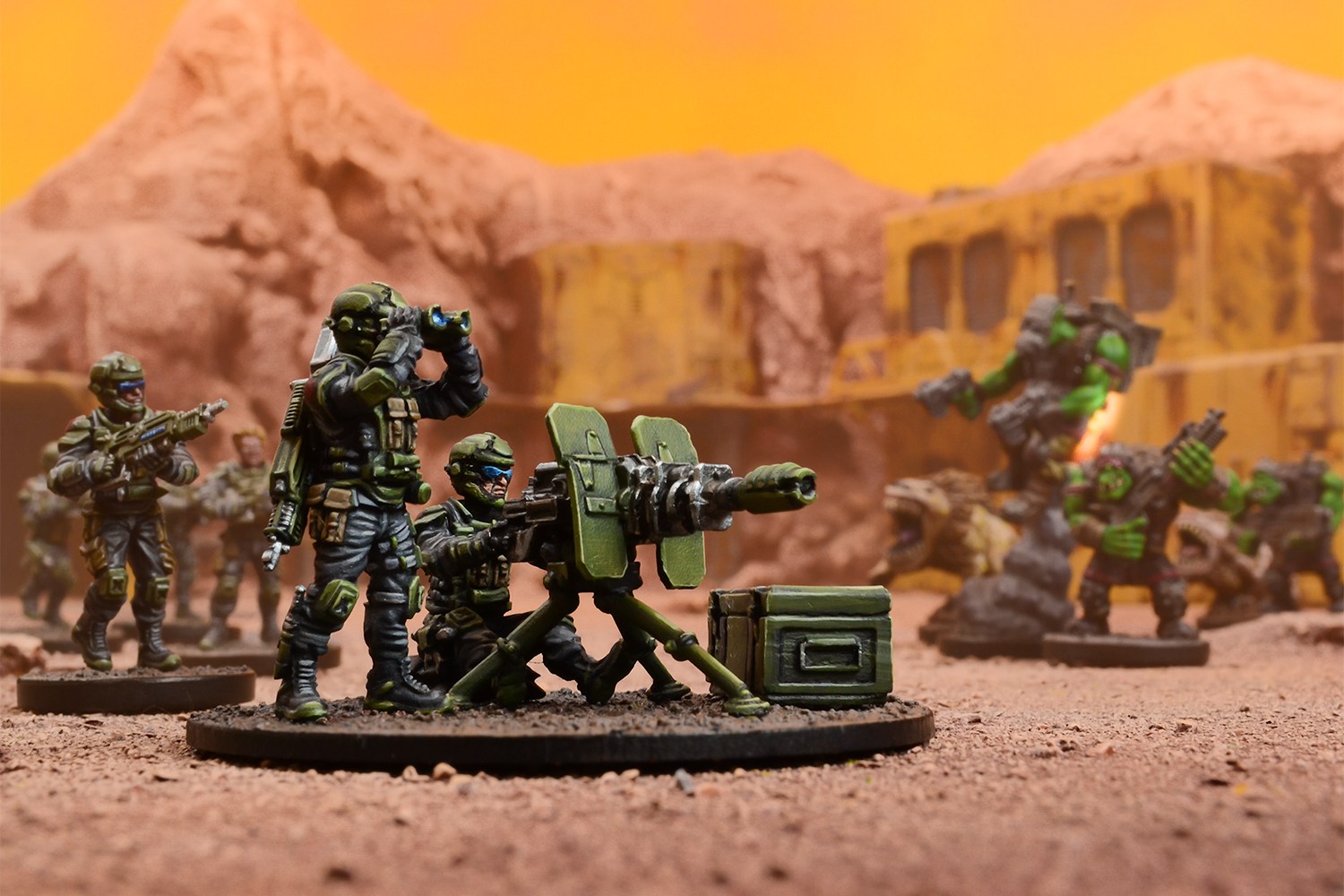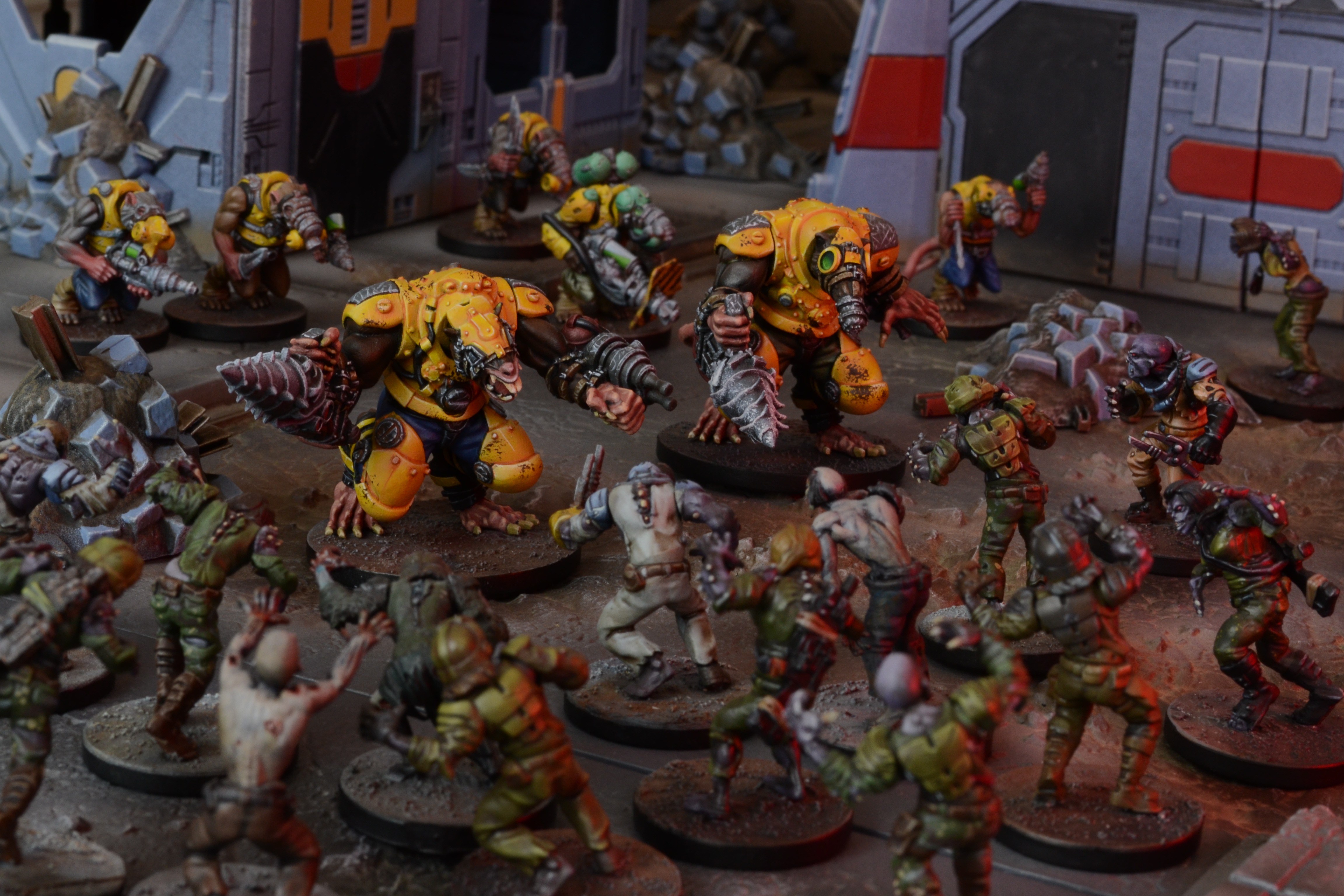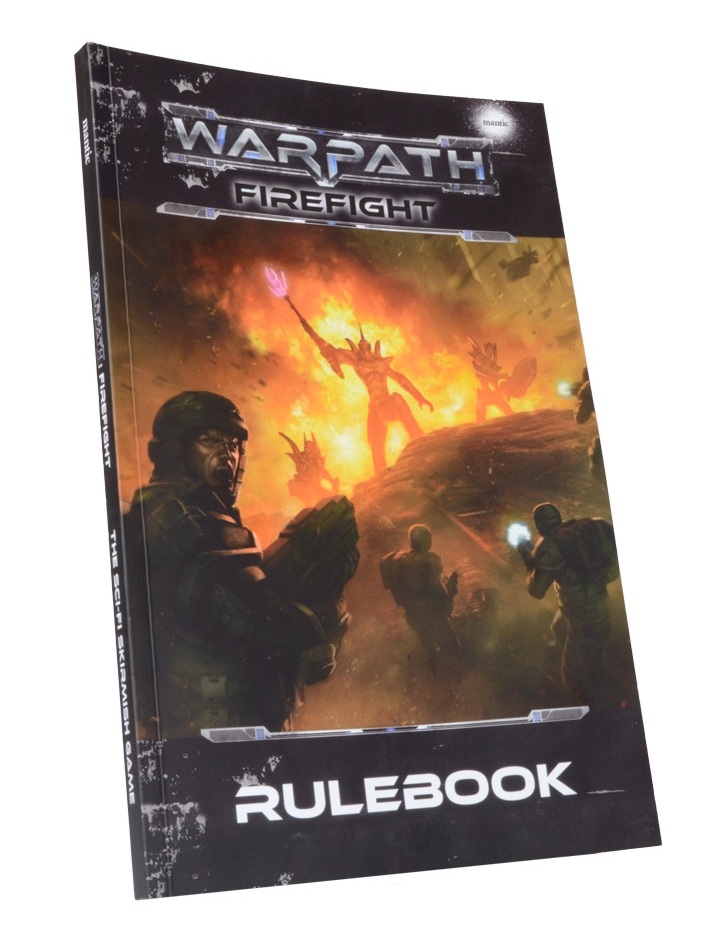Shooting Rules in Mantic’s New Warpath Firefight


Today we take a look at Line of Sight in Warpath’s new Firefight expansion. Let’s see what Mantic has cooked up for the tabletop.
via ManticGames
Line of Sight
In Firefight, there are two forms of line of sight. The first is to determine whether or not a unit can be targeted by shooting and the second is to determine whether or not targets are in cover. Unit leaders are very important for these actions, as they direct their squad’s firepower. This is probably the most complex part of the rules, but it makes sense once you get your head around it. Get yourself a cup of tea, and we’ll go through this.

When you target a unit for shooting, you must determine if they are eligible by checking line of sight from your firing unit’s leader. This does mean that if there are models in a unit that cannot be seen by your unit’s leader, they cannot be targeted or damaged by shooting. This occurs when there is a piece of terrain or another unit that has the same or a greater height blocking your unit leader’s line of sight. Each model and piece of terrain has a height listed in the rulebook to help with this.
Checking for cover is only done for eligible targets – models that your unit leader can see, as above. Cover is also determined by your unit leader. If your unit leader cannot draw line of sight to every part of a model, due to units or pieces of terrain between your unit leader and the target model that are not blocking line of sight (as above), then the model is in cover. If at least half of the models in the unit are in cover, then the unit considered to be in cover as a whole. Otherwise, they don’t gain the benefit of cover. If you’re firing while in contact with terrain, then this is ignored for cover.
There are further rules concerning how units can interact with piece of terrain, like taking up defensive positions and using fortifications, which we’ll cover in a future article.
Shooting
Firefight, as you might have guessed from the name, is all about the guns. From the humble laser rifle to the mighty polaris cannon, ranged combat is paramount in the future. Your units are not only capable of but encouraged to move and shoot in games, as this makes for far more dynamic battles – preventing the ‘stand back and shoot’ situation. After you’ve determined what you can see and shoot as above, you’re ready to unleash hell on your enemies!

Weapons in Warpath have ranges (in inches), and you can only shoot targets that are in range (obviously). As your soldiers take aim, you roll some six-sided dice to determine whether or not they can hit. Each weapon has the number of dice listed on their profile, and you roll and compare to your unit’s Accuracy stat. Some factors, like close range and firing from terrain, will give bonuses to your dice. Others, like cover and fortifications, will give you penalties. Importantly, rolls of 1 will always fail, and rolls of 6 will always succeed, regardless of modifiers.
After you’ve rolled to hit, take those dice and roll them to damage. As your unit’s shots hit home, you will roll against your target’s Defence stat – their armour, in simplest terms. Many weapons in Firefight have an AP (Armour Piercing) value, which gives you a bonus to these rolls. Rolls of 1 will always fail, and if your target has a Defence stat of more than 6, you will need AP to damage them at all.
Finally, the successes from above are applied as damage. This is done one model at a time, starting with any already wounded models. Your opponent chooses which models to apply these to. When a model takes enough damage to equal their Resilience stat, they are removed. Any remaining damage that does not remove a model is applied last and kept on the model until they receive more.
Suppression
Any unit that comes under attack will take on suppression during the game. This represents the unit ducking into cover to avoid incoming fire. Suppression can stop a unit in its tracks or hinder their ability to fight – which is dangerous in a game as dynamic as Firefight. Managing your own units’ suppression in a game is vital, but equally, suppressing your opponent’s units can be very effective. The Plague army relies heavily on your ranged units suppressing the foes so that your stronger assault units can close in for the kill.

In Firefight, suppression is marked using counters, known as Suppression Points. As a unit accrues more points, they become more likely to be suppressed. Counters can be added by the unit taking incoming fire, weapons that have the Suppressive Fire special rule, and by taking damage. These effects are cumulative, so a well-executed shooting attack can be devastating, even if it doesn’t cause many casualties.
Once a unit has taken enough points to equal their Nerve stat, they are marked as Suppressed. Suppressed units move at half of their speed and have a penalty to hit at range or in melee. You remove a single point with the Regroup short action, or multiple points with the Rally long action, which also allows you to take a free move. Sometimes, taking actions to relieve your units from suppression is a better tactic than relying on aggression to win the day.
If a unit takes twice as many suppression points as the Nerve stat, then they are Grounded. This is very dangerous, as your troops are now on the verge of fleeing from combat. Groundedunits can barely act in their activation, unable to issue orders or even fight in melee; units in this state are really vulnerable. When a Grounded unit is activated, you must roll a dice for each suppression point on the unit – every time this roll exceed the unit’s Nerve you must either remove one model from the unit, or have the entire unit flee a shot distance towards your board edge. The choice is between protecting your unit or holding ground. If the flee move brings you into contact with an enemy or impassable terrain, the fleeing unit is removed from the battlefield. After rolling, you automatically remove some of the suppression points on the unit – they might be able to fight next turn, despite not being able to this turn.
With that, you are now familiar with shooting and suppression in Firefight. There are more details for these that you can find in the rulebook, but you can now grasp the broad strokes of the rules.
Warpath: Firefight Rulebook $24.99
Firefight is a medium-scale skirmish wargame set in the same exciting universe. It goes deeper into the action, zooming in and allowing you to decide the fate of your soldiers in smaller conflicts. The game focuses on squad-based action and individual soldiers, where the stakes are desperate and every bullet counts.
Firefight uses the Warpath miniatures range and shares some core mechanics, however the gameplay is more focused on the fate of individual units to ensure you have a totally different sci-fi gaming experience.This rulebook contains everything you need to know to play Firefight’s strategic skirmishes. Inside you will find:
– a new take on the Warpath rules, presenting a new challenge with a familiar starting point.
– detail-oriented mechanics to make every soldier count.
– comprehensive terrain rules that tie in with Mantic’s Battlezones scenery range.
– customisable character equipment to make your unit leaders stand out.Advertisement
~Who’s playing Warpath out there?






